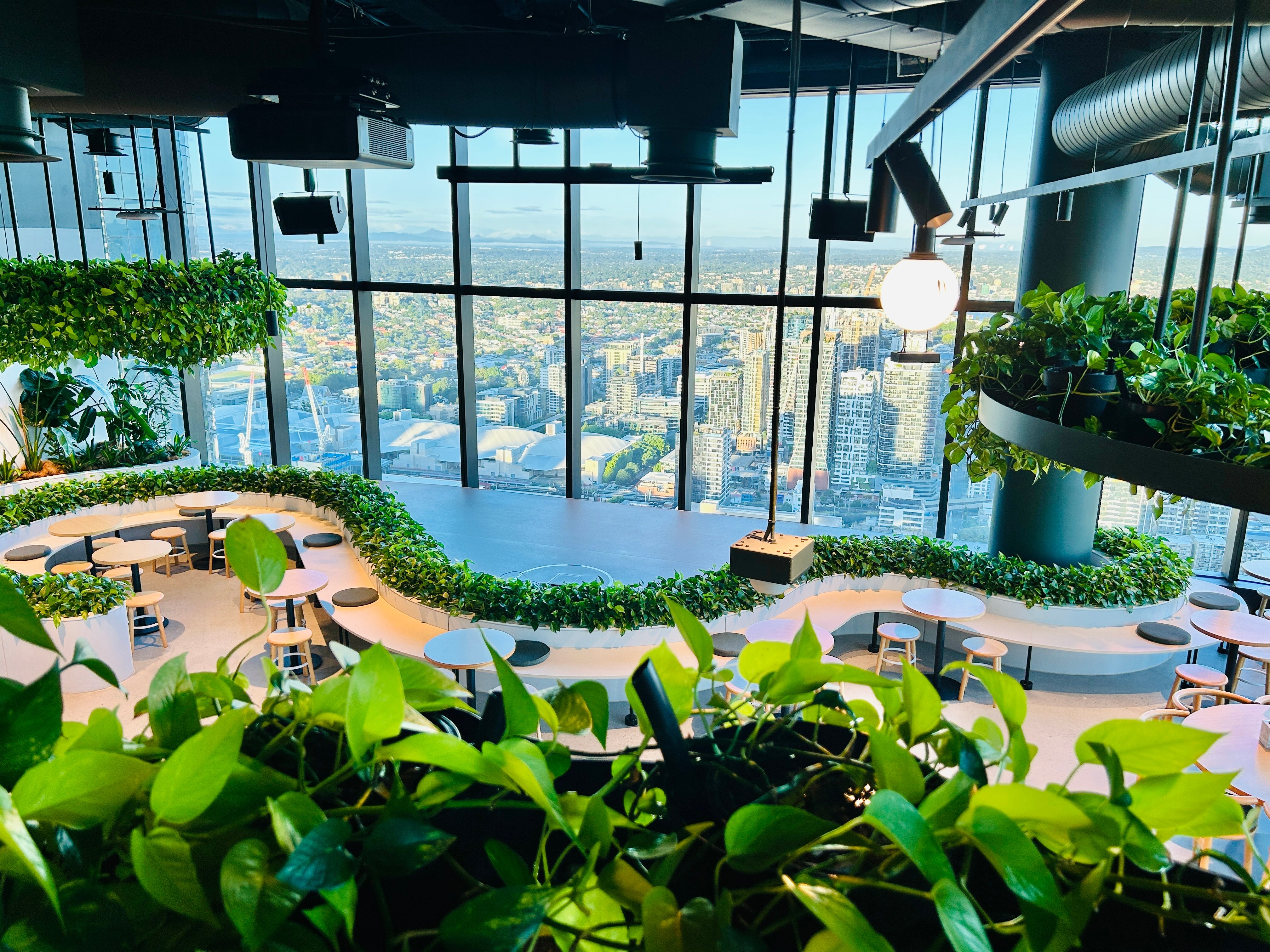Could a Plant Be the Most Powerful Design Tool of 2025?
Extreme heat. Rising anxiety. Disconnected cities.
While the world turns to tech for answers, a quieter revolution is taking root—growing from nature, not code.
Across global studios, architects and designers are re-evaluating what creates truly resilient, human-centred spaces. And one of the most overlooked, yet most powerful tools in that response?
Plants.
Not just lobby ornaments. Not just feel-good filler.
We're talking about plants as functional infrastructure—as essential to performance as lighting or air.
So let’s ask:
- What role should greenery play in your next project?
- And what does truly intentional plant design actually look like?
The Wellness Shift Is Real.
Are Our Buildings Keeping Up?
The World Health Organisation is pushing for stricter indoor air quality standards. Workplace strategists are linking staff wellbeing to retention and productivity.
Sustainability is no longer optional—it’s contractual.
So where does plantscaping sit in all of this?
Done right, it delivers measurable benefits:
- Cleaner Indoor Air
- Stress and anxiety reduction
- Increased focus
- Acoustic softening
- Visual and cultural connection
But here's the real question:
Is your plantscaping just styling? Or is it specification?

Image: Transurban, Brisbane
Designing With Purpose, Not Just Pot Plants
The most forward-thinking projects are taking a new approach:
- Selecting native species tied to place, resilience, and cultural value
- Collaborating with Indigenous artists to embed narrative into vessels and forms
- Using sub-irrigation systems that reduce water use and keep plants thriving
- Specifying lighting plans that support real, sustained plant health
Have you accounted for:
- Light levels?
- Ongoing maintenance and plant lifespan?
- The connection between planting and occupant wellbeing?
If not — why not?

Image: Ambius, designing with purpose
The Future of Design Is Living, Breathing, and Rooted in Country
In a world facing climate extremes, mental health challenges, and cultural erasure, our buildings must do more than shelter.
They must:
- Support health and wellbeing of occupants
- Honour connection to Country
- Reflect on place, purpose and identity
- Contribute to measurable sustainability outcomes
So before your next project brief, ask:
- Could this wall be green instead of grey?
- Could it cool the space, calm the mind, and clean the indoor air?
- Could it do more than look good—could it do good?
Because the next generation of great design won’t just be seen.
It will be felt. And often?
It will start with a plant.
 Image: Ambius Indoor Plant Range
Image: Ambius Indoor Plant Range
It’s Time to Rethink the Brief
Design is shifting.
It’s no longer just “how does this look?”
It’s “how does this perform—and who does it serve?”
That’s where the team at Ambius comes in.
A business based on scientific evidence, incorporated through every aspect, from products and solutions right through to the approach.
Their GROW Formula translates decades of botanical expertise into clear, project-ready strategies that integrate the plant species, in the right light, correct watering, and maintenance into seamless interior solutions.
It’s the difference between a green corner and a thriving, future-proofed space.
🔗 Join the Ambius CPD to see how living design creates healthier, sustainable spaces.
Want to see how plantscaping is shaping next-gen interior environments? Take a Look....






